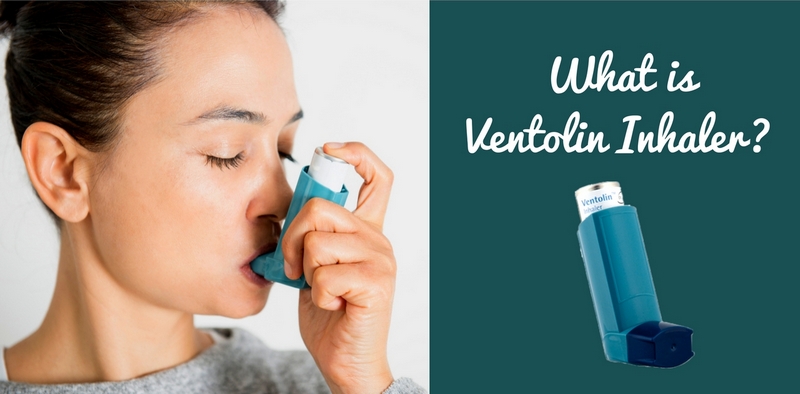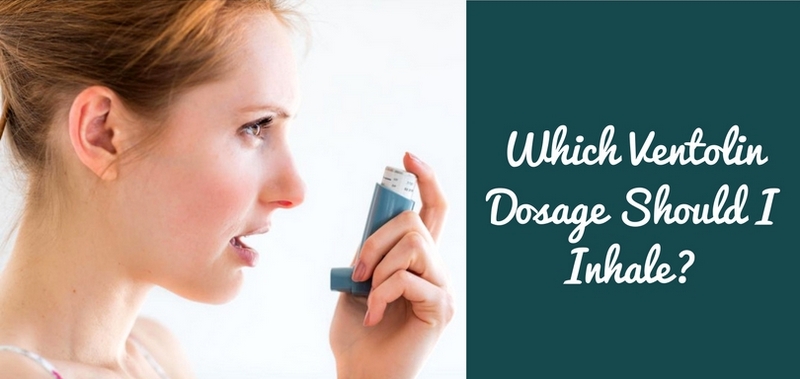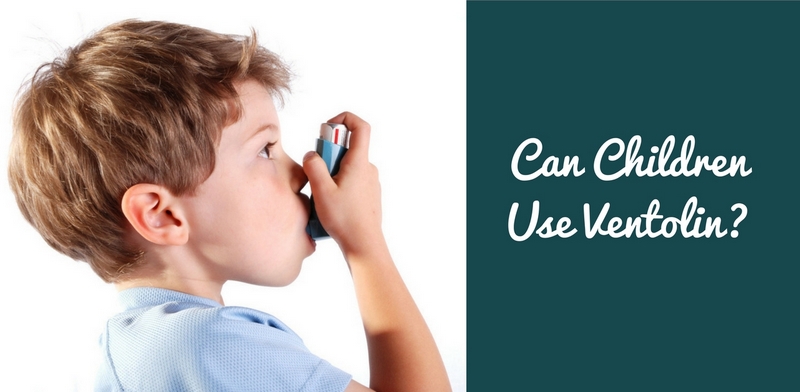Ventolin (also known as salbutemol / albuterol) is a medication that treats or prevents breathing problems in asthma or other airway diseases.
- What is Ventolin Inhaler?
- Indications
- Mechanism of Action
- How to Use Ventolin?
- Dosage
- Overdose
- Side Effects
- Contraindications
- Interactions
- Ventolin for Children
- Ventolin During Pregnancy
- Advantages
- Additional Information
1. What is Ventolin Inhaler?

Ventolin is an anti-asthmatic drug used for therapeutic and prophylactic purposes. The preparation is able to treat diseases of the bronchopulmonary system accompanied by a spasm of smooth muscles of the bronchi.
Ventolin is used for inhalation only. It includes the active substance – salbutamol, which suppresses bronchial reactivity and prevents bronchospasm. There also several auxiliary substances that facilitate the administration of salbutamol and help to distribute the active substance evenly.
2. Indications
Ventolin inhaler (salbutamol) is usually prescribed for the treatment of bronchial asthma: prevention and relief of bronchospasm, as a component in the complex treatment of bronchial asthma (including asthmatic status).
The drug can also be used for the prevention of asthma and chronic obstructive pulmonary disease, which is accompanied by reversible bronchial obstruction.
3. Mechanism of Action
When Ventolin is administered into the respiratory tract, salbutamol acts on the smooth muscles of the bronchi, relaxing them, lowering the resistance of the airways and increasing the amount of inhaled air. In addition, the active ingredient of Ventolin – salbutamol – stimulates the secretion of the bronchial glands and activates the ciliary epithelium of the bronchi, thus ensuring the excretion of mucus during coughing.
4. How To Use Ventolin?
If you use Ventolin inhaler for the first time or if the preparation has not been used for a week or more, it is necessary to remove the safety cap from the bottle, slightly squeezing its edges from the sides. Shake the balloon and press the inhaler valve in order to ensure its mechanism is functioning properly.
After inserting the mouthpiece, shake inhaler one more time and position the balloon in the hand as follows: the bottom of the balloon should be pointed upwards, the thumb should be placed on the base under the mouthpiece and the index finger – in the bottom area. The patient should make a deep and slow exhalation, grasp the mouth of the mouthpiece with his lips (without grasping it with teeth). Then you need to take a deep breath through your mouth and simultaneously press your index finger to the bottom of the inhaler.
After the administration of a single dose of Ventolin (salbutamol / albuterol), you should hold your breath for a few seconds and exhale slowly. The next dose can be administered in the same way after 30 seconds. After that, the mouthpiece should be closed with a cap.
With inhalation, the patient should not make any movements. In the first days of application, you can practice in front of a mirror.
5. Dosage

Only a doctor can decide whether to increase the dose or the frequency of Ventolin.
It is not recommended to use Ventolin inhaler more often than 4 times per day. The need for frequent use of Ventolin at the maximum dose or in a sudden increase in dose indicates a worsening state of health.
Ventolin dosage for adults:
- an acute asthma attack – 100-200 mkg (1-2 injections);
- prevention of an acute asthma attack with physical stress or exposure to an allergen – 200 mcg (2 injections) 10 -15 minutes before the impact of the triggering factor;
- maintenance therapy – 200 mcg (2 injections) up to 4 times a day.
Ventolin dosage for children (18 months to 2 years):
- an acute asthma attack – 100 mcg (1 injection);
- prevention of an asthma attack – 100 mcg (1 injection) 10-15 minutes before the impact of the triggering factor;
- maintenance therapy – 100 mcg (1 injection) up to 4 times a day.
You can increase the effectiveness of Ventolin by using additional devices – spacers. Spacers are recommended for inhalation and for those patients who cannot coordinate their actions with aerosol.
6. Overdose
Symptoms: hypokalemia, decreased blood pressure, tachycardia, muscle tremor, nausea, vomiting, agitation, hyperglycemia, respiratory alkalosis, hypoxemia, headache, hallucinations, convulsions, tachyarrhythmia, ventricular flutter, peripheral vasodilation.
Treatment: with cardioselective β-adrenoblockers. However, β-adrenoreceptor blockers should be used with caution in patients who have a history of bronchospasm. Using large doses of salbutamol can cause hypokalemia, so if you suspect an overdose, you should monitor the potassium level in the serum.
7. Side Effects
- trembling of the muscles of the skeleton;
- muscle spasm;
- headache and dizziness;
- tachycardia;
- irritation of the mucous larynx and mouth;
- various allergic reactions, paradoxical bronchospasm;
- salbutamol addiction.
To avoid these side effects, carefully read the instructions for use. Do not use Ventolin inhaler without a doctor’s consultation.
8. Contraindications
There are a few absolute contraindications for use of Ventolin inhaler, including:
- hypersensitivity to any of the components of the drug;
- children aged up to 18 months;
- pregnancy with the threat of miscarriage or premature birth.
But there are a lot of cases when Ventolin (salbutamol) should be used with caution:
- cardiac ischemia;
- myocarditis;
- congenital heart defect;
- tachyarrhythmia;
- aortic stenosis;
- thyrotoxicosis;
- glaucoma;
- diabetes mellitus;
- arterial hypertension;
- renal and hepatic impairment;
- epilepsy;
- children under the age of 2;
- period of pregnancy and breastfeeding.
9. Interactions
You should not combine Ventolin inhaler with non-selective beta-blockers (propranolol) – this interaction increases the likelihood of arrhythmia in the background of cardiac glycosides. Ventolin is not contraindicated in patients who take MAO inhibitors. The interaction of Ventolin and theophylline (and other xanthines) increase the likelihood of tachyarrhythmias. Using the drug with levodopa can cause ventricular arrhythmias. Using the drug with anticholinergic agents may increase the intraocular pressure. Glucocorticosteroids and diuretics can increase hypokalemia when combined with Ventolin.
10. Ventolin for Children

Ventolin inhaler can be used by children from the age of 2. Children of an earlier age should not use the drug since negative consequences are possible.
In most cases, Ventolin is administered for a short period of time. Ventolin dosages for children should be determined by a doctor taking into account the severity of bronchodilator spasm, the presence of concomitant diseases and the risk of side effects.
For the best results, the inhalation procedure is carried out with a nebulizer. The duration of the inhalation, the nature of the administration and the dosage used are also prescribed by a doctor individually.
Ventolin is a very effective drug, however, remember that the uncontrolled and incorrect use of Ventolin inhaler may significantly harm the health of a child. Therefore, all therapeutic measures should be coordinated by a medical specialist.
11. Ventolin During Pregnancy
Pregnant women should use Ventolin only in the case the expected benefit for the patient exceeds the potential risk to the fetus.
In the course of post-registration follow-up, there were reports about rare cases of various developmental malformations in children, including the formation of the wolf mouth and developmental limbs against the background of using salbutamol by women during pregnancy. In some of these cases, mothers took several medications during pregnancy. A causal relationship with Ventolin was not established.
Salbutamol may penetrate into breast milk, so it is not recommended to administer it during breastfeeding unless the expected benefit for the patient outweighs the potential risk to the baby. There is no evidence of whether salbutamol in breast milk has a deleterious effect on the baby.
12. Advantages
- According to the patients’ reviews, Ventolin is well tolerated and very effective in the treatment of bronchospasm;
- With proper use of the drug, side effects are rare;
- Ventolin price is affordable – for example, you can buy very cheap Ventolin from Canadian online pharmacy;
- The preparation can quickly act directly on the inflammation focus;
- Salbutamol does not cause negative changes in the internal organs;
- Ventolin therapy is indicated for patients of any age, it works well even during exacerbation of respiratory system diseases.
13. Additional Information
In the treatment of bronchial asthma, Ventolin should not be the only component of therapy. An increase in the need for short-acting β2-adrenergics to control the symptoms of bronchial asthma indicates the progression of the disease. This condition is a threat to the life of the patient, so the treatment plan should be reviewed; the question of increasing the dose of glucocorticosteroids should be solved by a doctor. Such patients are daily monitored for the maximum rate of exhalation. Solve the issue of increasing the dose of Ventolin with a doctor since taking large doses of the drug can lead to adverse effects.
Patients should know how to use Ventolin inhaler correctly since the effectiveness of treatment depends on this knowledge.
Store at temperature below 86 degrees Fahrenheit. Avoid exposure to direct sunlight. Do not freeze. Shelf life is two years. Do not use after the expiration date. The unused solution of Ventolin remaining in the nebulizer should not be stored.

